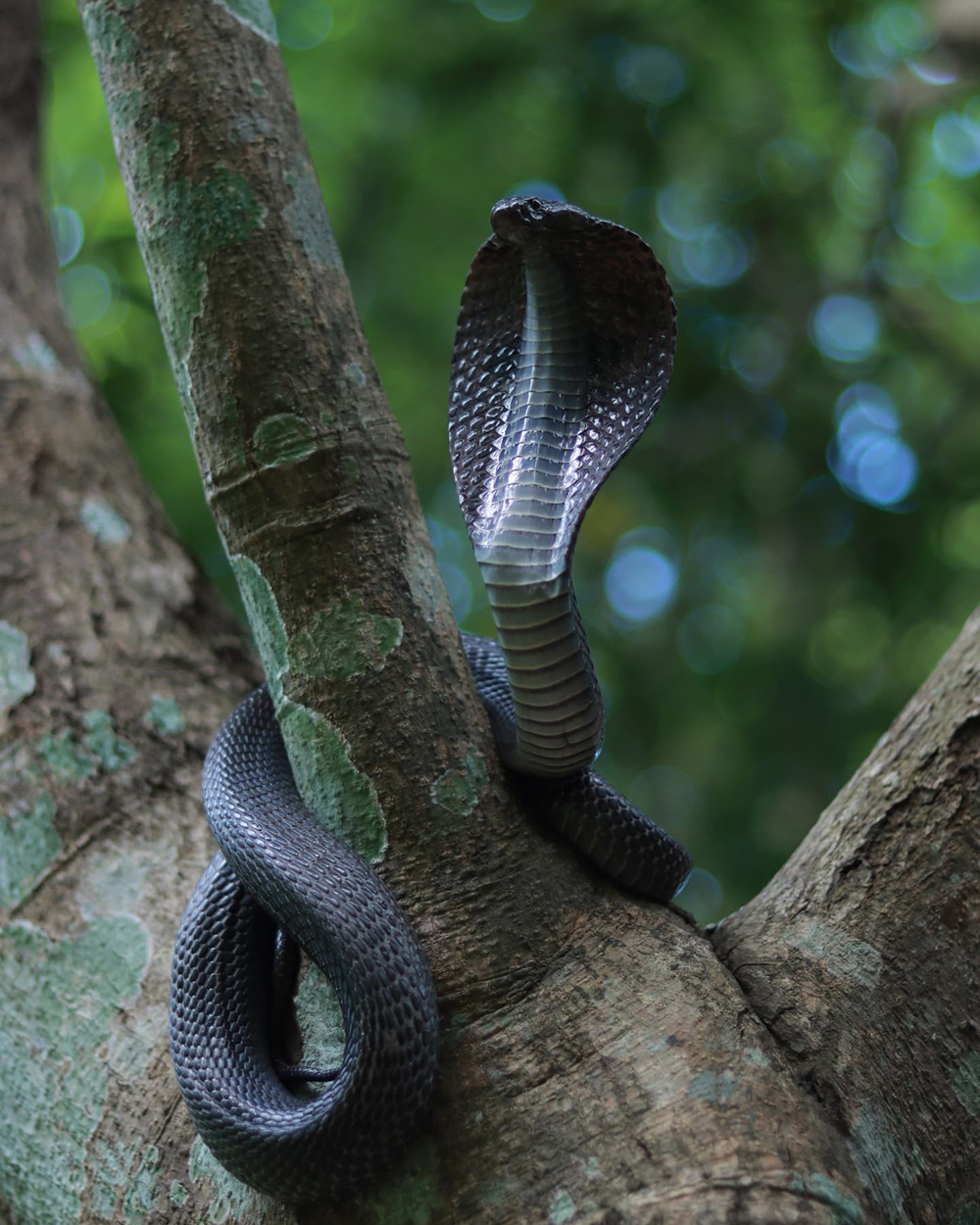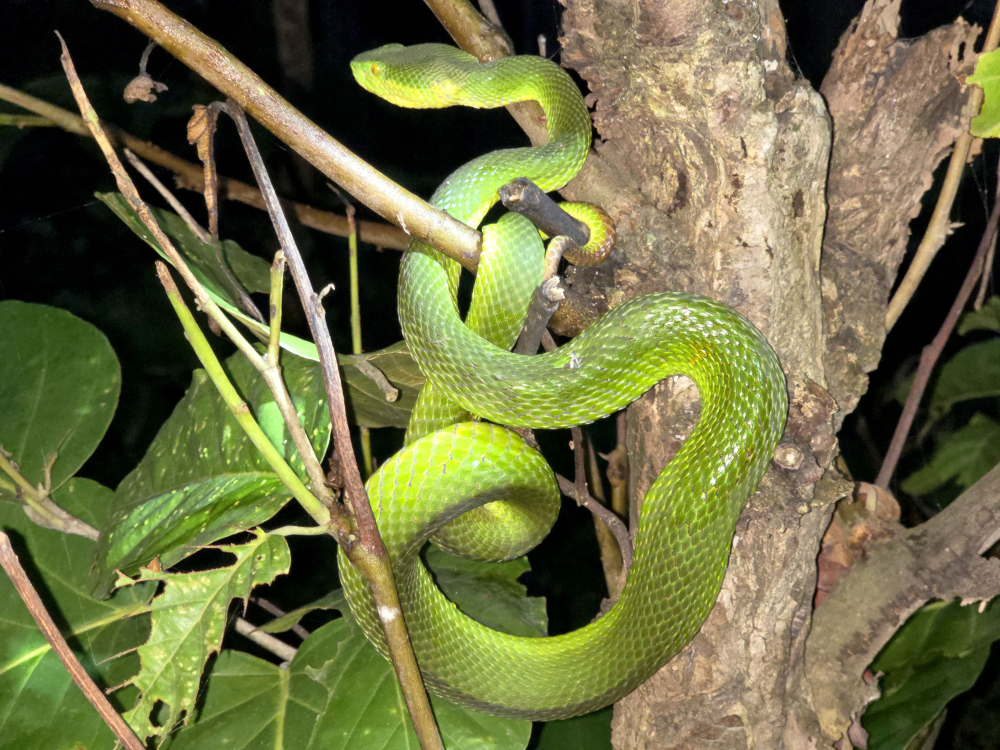
We use Google Cloud Translation Services. Google requires we provide the following disclaimer relating to use of this service:
This service may contain translations powered by Google. Google disclaims all warranties related to the translations, expressed or implied, including any warranties of accuracy, reliability, and any implied warranties of merchantability, fitness for a particular purpose, and noninfringement.

Highlights
- Among the snake species found in Nepal, about 21 species are poisonous. Among them, Goman, Karet, Roussell's Viper, King Cobra and Coral Snake (Cancer Snake) are considered more poisonous.
- Most of the poor and underprivileged people are victims of snakebite. It seems that a special plan should be brought for relief packages for them as well.
- Human-snake conflict is more serious than human-wildlife conflict in Nepal. The number of deaths and injuries caused by snakebite in Nepal is more than that caused by wild animals.



According to Hindu religious beliefs, Lord Shiva has made a snake into a garland and worn it as an ornament. Lord Vishnu has made Sheshnag his throne. Lord Vishnu sleeps under the umbrella of snake grass. There is a religious belief that when worshiping a snake, there will be no snakebites, peace and prosperity.

Hindu devotees worship Naga on the fifth day of the seventh lunar month of every year. Nag Puja is celebrated on the day of Saun Shukla Panchami. Shukla Paksha means the time when the moon rises during a month of the lunar month. In the lunar calendar, Shukla Paksha is also religiously called the day of God. There is a religious belief that the snake that stays inside the hut in the summer comes out on the day of Shravan Shukla Panchami due to the cold due to rain.
It is believed that hanging a snake on the main door of the house will be very auspicious and prevent snake bites, scorpions and other creatures inside the house, fire/water, wind and lightning. There has been a religious belief that these creatures should not be killed. I bought cow dung worth 10 rupees in Baneshwar and tied the snake with religious belief and science.
There is a religious belief that if the snake is angry, it will not rain. That's why on the day of Nag Panchami, puja is done in water springs and wet places in villages.
Snakes and water have been associated with religious and modern times. According to a legend, when Guru Gorakhnath sat on a snake for 12 years doing penance, the snake got angry and no water came, so people came to plead with Guru Matsyendranath of Gorakhnath. Matsyendranath said that only after Gorakhnath, who performed penance by leaning on the snake, would get out of his position, rain would come. There has been a religious belief that it rained only after the removal of Gorakhnath.
That's why there is a statement that worship is done for water to please the serpent. On the other hand, the farmer killed Nag and his child while digging the field and in return Nagini stabbed and killed the farmer's family but the farmer's daughter survived because she was outside the house, later the farmer's daughter made Nagini happy by telling her not to kill her. It is mentioned that Nagini, who was pleased, asked for the revival of her family instead of asking the deceased farmer's daughter as a dowry and the farmer's family got revival. It is said that Nag Panchami was celebrated on that day as it was the day of Saun Shukla Panchami.
Another time, according to religious beliefs, after Takshak Naga killed king Parikshit, his son Janamejaya sacrificed a snake to destroy the species by performing a snake sacrifice. It is said that Nadivardhini Panchami was the day on which the sacrifice was stopped after Takshak Nag reached Indraloka and persuaded him to stop the sacrifice for the protection of the snake species. Another type of belief is that the custom of worshiping snakes started due to Brahma's dialogue with Nagarajaga on the seventh lunar day of the snake king Naga.
Although religiously discussed in different ways, from a scientific point of view, the snake is an important animal of our ecological system. Reptiles Snakes play an important role in the food cycle. Whether it's farm frogs or small creatures like mice, it helps maintain balance. Snakes play an important role in controlling their numbers. It also indirectly disperses the seeds . As when making food for rodents such as mice, snakes play a role in moving seeds and grains from one place to another. Snakes also play a role in the control of diseases that are transmitted from animals such as rats to humans and domestic animals. For the treatment of snakebite, it is very important because the poison is extracted from the snake itself. 
Goman Snake
000
As soon as you see a snake, there is a tradition of getting nervous and attacking . Fear of snakes And this situation has come because of the common understanding that it stings.
While we are talking about the religious and scientific importance of snakes on the day of Nag Panchami, snakebites cannot be ignored. Two people died in Gulria Municipality Ward No. 1 of Bardia the previous day, Thursday. A 9-month-old baby and an 11-year-old girl died of snake bites while they were sleeping. Another 6-year-old girl from the same ward was seriously injured by a snakebite and is being treated at Bheri Hospital Nepalgunj.
From April to October, there are many cases of snakebites in Nepal, especially in the Terai. During the summer, when the filter gets inside, it gets very hot and comes out when water gets inside the filter. This time is considered fertile for snakes. Cases of snakebite occur during flowering and hatching, searching for food. It seems that the Terai region of Nepal has been more affected due to the discussion of snakebite incidents. There are various reasons for this. The structure of the houses is not safe, the settlements are dense, there are many corners, they do not hang on the ground, and the number of snakes is high in the lowlands, so there is a conflict between humans and snakes.

Hareu snake
According to a study done by Dr. Sanjeev Kumar Sharma, a professor of BP Koirala Academy of Health Sciences in Dharan, 261 people are bitten by snakes every year out of every 100,000 people in Terai. According to the study published in the Lancet journal, 22 people die from snakebites. In that study, 3,000 people die every year from snakebite in Nepal. The conclusion of his study is that 37 thousand 661 cases of snakebite occur annually in 23 districts of Terai. In those incidents, 2,386 to 3,225 people died.
Goman and Karat snake bites occur in Terai . Even more so in rural areas. While the garter snake is more active in the dark, the goman is more active during the morning and afternoon light. Events often show that snake bites occur in the light and in the dark. Such incidents can happen even during the day when going to the place where the snake resides . Its characteristic is that snakes do not come out when the sun is too bright.
Patients who go to the hospital due to mosquito bites do not know that they have been bitten . There is a small scar in the place where the beetle bites and the person does not know when it is bitten while searching for food at night . In the case of Bardiya, it can also be speculated that it may be a snake. Goman snake also makes a sound and the bite is very painful and sore. In the mountains, there is pain and hearing in the place of snake bites of hare and viper species.
About 21 species of snakes found in Nepal are poisonous. Among them, goman, karet, Roussell's viper, king cobra and coral snake are considered more poisonous.
Epidemiology and Disease Control Division has taken out a procedure related to snakebite management to reduce the death due to snakebite . As mentioned in the procedure, in most cases of snakebite, people die due to their own causes. People have lost their lives due to consumption of home medicine, panic attacks and not being taken to the hospital on time. 
Russell Viper Snake (Baghe Sarp)
In Nepal, there is a practice of killing snakes as soon as they are seen, but recently, public awareness activities related to snake rescue and protection have been started in various parts of the country . The presence of snake rescuers has also started. But in the name of snake rescue, people who do not adopt security sensitivity, and take photos/videos indiscriminately, are victims on the contrary. It seems necessary to create a separate procedure for snake rescue and give special training to the rescuers and tie it to a law. 
Two-headed snakes
On the other hand, most snakes are not venomous and do not bite unless provoked. Since snakes eat animals such as field mice and frogs, their food is not humans. But actions such as handling and teasing snakes have led to snakebites. Human-snake conflict is more serious than human-wildlife conflict in Nepal. The number of deaths and injuries from snakebite is more than that from wild animals in Nepal. Most of the poor and underprivileged people are victims of snakebites. It is seen that a special plan should be brought for relief package for them too . How would that parent see his child sleeping with him in the morning dying of a snake bite? Therefore, it seems that next steps should be taken to bring awareness and relief packages to prevent snakebite and its occurrences .
 प्रकाशित : श्रावण २५, २०८१ १२:३०
प्रकाशित : श्रावण २५, २०८१ १२:३०

 २२.१२°C काठमाडौं
२२.१२°C काठमाडौं















